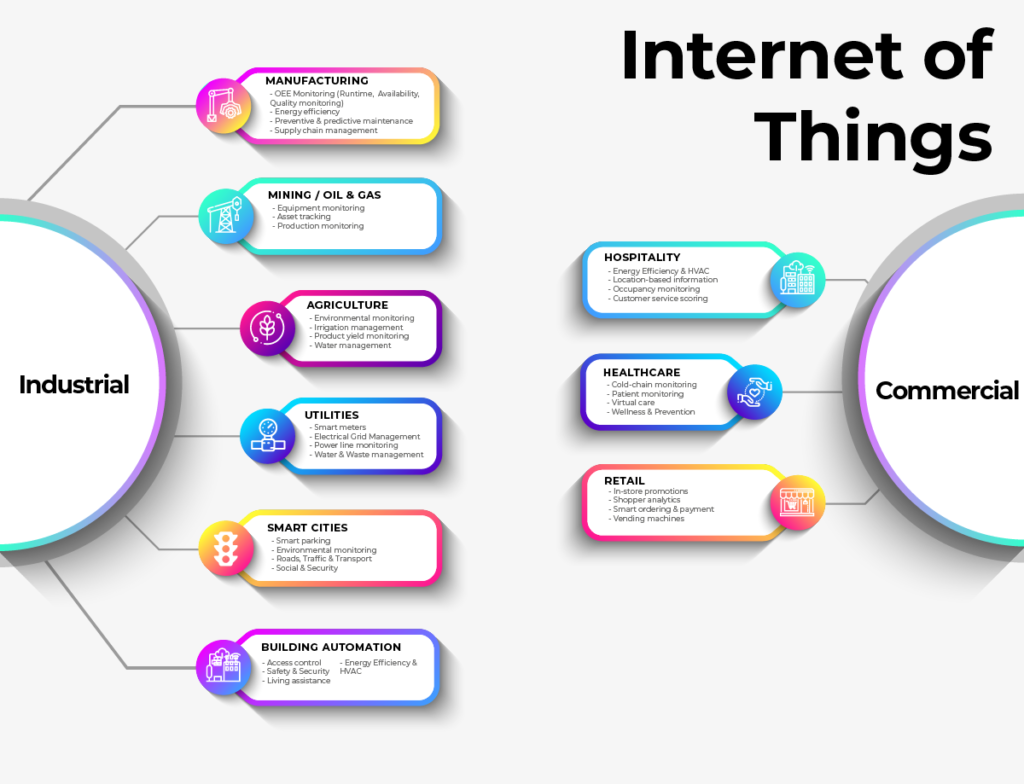Internet of Things
IoT, Internet of Things, is often referred to a “smart” object. These devices can be anything and everything from cars, home appliances to shoes and light switches. These devices connect to the internet, pass and receive data and connect the physical world to the digital world.
New technologies, cheaper computer chips and the ubiquity of wireless networks has made it possible to convert almost any device as IoT. Sensors in the IoTs add a level of digital intelligence to devices, enabling them to communicate real-time data without involving a human being. This makes the entire process smarter, efficient and responsive.
For example, a bulb is an IoT device, if it can be switched on or off from a smartphone.
There is a similar concept called IIoT, stands for Industrial Internet of Things.
Industrial Internet of Things
Industrial Internet of Things is also known as the fourth industrial revolution or Industry 4.0 The concept is the same as for the consumer IoT devices but IIoT aims to use a combination of sensors, wireless networks, big data, AI and analytics to measure and optimise industrial processes. It could help reduce cost and make the process more efficient and reliable.
IIoT can be used as a standalone product or can be used as a disruptive technology and thus can be used to generate the new source of revenues for the organisation.
Difference between IoT & IIoT
The basic difference between the Internet of things and Industrial Internet of things is that IoT is most commonly used for consumer usage while IIoT is used for the industrial purpose such as manufacturing, supply chain monitor and management system.

A key difference between IoT and IIoT is that, unlike consumer IoT applications, incentives for adopting IIoT technologies are much greater. IIoT connects critical machines and sensors in high stakes industries such as aerospace and defence, healthcare and energy and thus the stakes are very high whereas IoTs such as smart devices are more for the convenience and comfort. IoT and IIoT also differ on the below parameters:
Read more on
[wpforms id=”320″ title=”true”]

